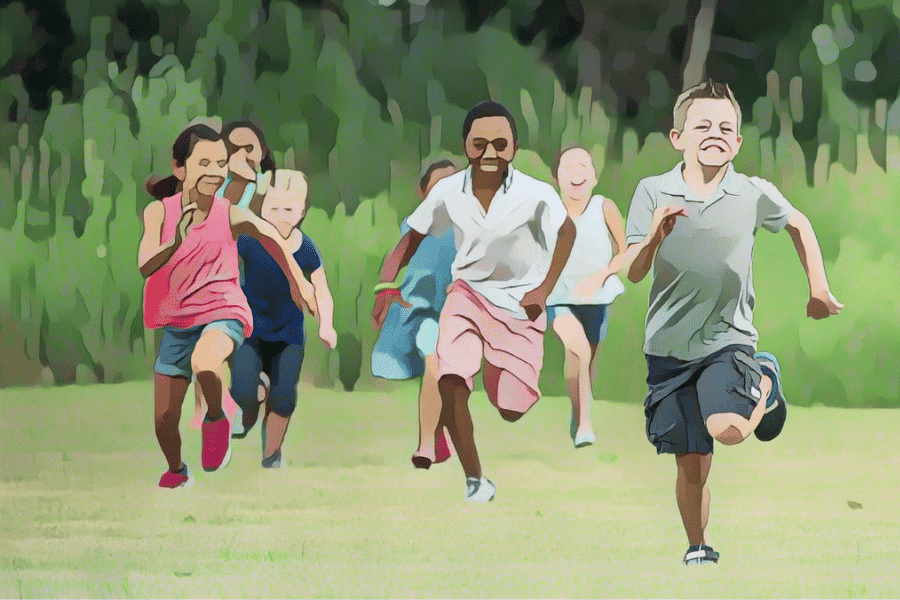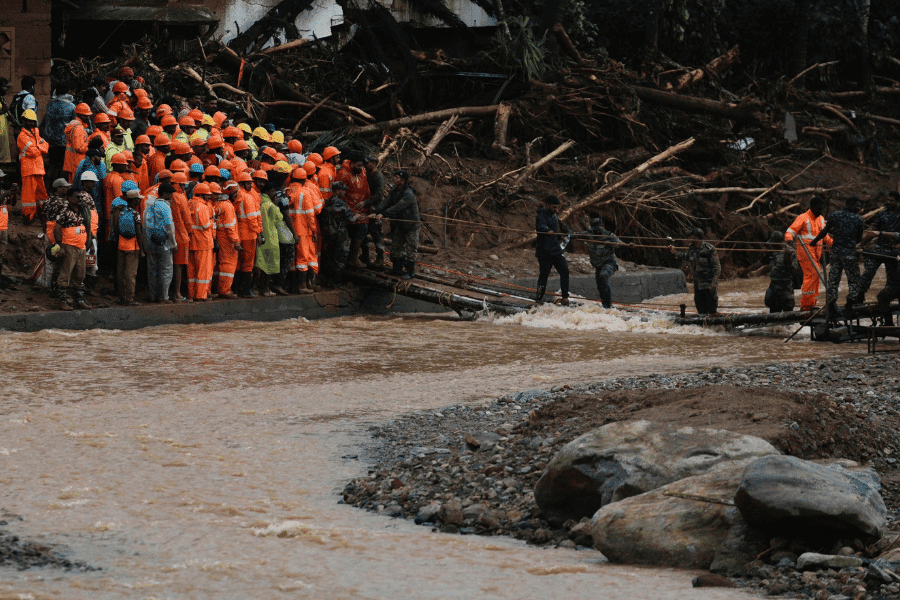When Mary Garrett was a child, kids walked to school and played outside after school. But today is a different world. Now Garrett worries about the lifestyles of the children she sees at the Tatnall School, in the U.S. state of Delaware, where she is a nurse.
“I don’t think kids have that kind of opportunity anymore,” she said. “I think the lifestyle changes, even having fewer sidewalks, like the neighborhood we live in now doesn’t have sidewalks.”
Kids, she said, don’t have that flexibility and freedom anymore. And that could be a big reason that so many young people are overweight.
According to the U.S. National Institutes of Health (NIH), 1 in 6 children ages 2-19 in the United States are classified as overweight, while 1 in 5 children are diagnosed with obesity. Severe obesity has also increased from 7.7% of the population to 9.7% in two years. On the global scale, obesity has similarly skyrocketed.
The World Health Organization (WHO) reports that obesity has more than doubled in adults since 1990 and more than quadrupled in adolescents.
According to the WHO, in 2022, 2.5 billion adults were overweight. 37 million children under the age of 5 are classified as overweight.
Changing the way we measure weight
Many factors contribute to obesity, such as genetics, types and amount of food and drink consumed, physical activity, sleep habits and access to necessities like areas to exercise and food. Nurse Garrett concludes that two key factors are physical activity and the rising convenience and prevalence of processed snacks. As the rise of a more sedentary lifestyle, for instance, not walking to school, becomes more popular, the need to spend time outdoors engaging in activity becomes even more critical.
In a report published in The Lancet Diabetes & Endocrinology journal, a group of 58 experts are recommending that obesity should no longer be defined by a BMI, or body mass index that is calculated according to height and weight, but by a combination of measurements, including waist circumference and evidence of health issues.
The new classification for BMI makes it easier to determine obesity, which begins to tackle the issue of where obesity stems from and how to prevent it in children as young as age two.
The NIH defines being obese as “a person whose weight is higher than what is considered to be a normal weight for a given height is described as being overweight or having obesity.”
However, Garrett said that that definition is not that simple. “BMI was actually based on a white man’s profile. So it doesn’t take into account females versus males, Latino versus white,” Garrett said.
Yet, obesity is not restricted to one demographic. According to the National Center for Health Statistics, the prevalence of severe obesity is 9.4% higher in women than in men in the United States, while it is significantly lower in adults with at least a bachelor’s degree.
Keeping kids healthy
Access to nutritional food, outdoor spaces in which to exercise, and unhealthy sleep habits are a global concern, particularly in developing countries. Wilmington, Delaware, is no exception. Doctors calculate a person’s weight status from a young age, beginning with a child’s pediatrician.
The weight of a child is calculated based on comparison with other same-age and same-sex children using charts from the U.S. Centers for Disease Control. The subject of obesity and living a healthy lifestyle is a critical conversation for parents to have as they raise the next generation.
There are an endless number of factors that can lead to a person being overweight or being diagnosed with obesity.
The NIH says that genetics and medical conditions, two variables outside of anyone’s control, can make it difficult to maintain a healthy weight. Obesity can also increase the risk of health problems like type 2 diabetes, high blood pressure and heart disease. Yet, there are modern societal factors besides just potato chips and soda that have emerged that play a large role in the rising rate of obesity in the United States.
Garrett sees kids eating processed foods a lot. “I think there’s also changes in our food and eating habits that could have an impact,” she said. “I think a lot of our food choices have been impacted by marketing.”
Pushing junk food
A rise in advertising for processed foods on television, which the overwhelming majority of children have access to in the United States, contributes to this.
Researchers at the University of Ottawa in 2021 found that on average, children see approximately 1,000 food-related advertisements on television each year. Yet, can you remember the last time you saw an ad for a salad, or maybe grilled salmon with vegetables? Probably not. But it’s likely you saw a Burger King ad in the past day, maybe even twice or more a day.
Most advertised products boast organic ingredients or appeal to certain dietary plans. Garrett, on the other hand, questions whether a vegan and gluten-free protein bar is healthier than simply making a peanut butter sandwich on homemade or whole bread.
This poses the question: What role are parents playing in a child’s view of what is healthy and what isn’t?
Kids can’t be expected to be well-versed in healthy choices from the moment they are born. It is up to the parents or guardians to educate and provide an example for children as they learn to make their own choices.
Tackling family obesity
Globally, there is a clear relationship between parent and child obesity. In a study published in 2021, researchers from Sungkyunkwan University School of Medicine in South Korea found that children with overweight or obese parents are 1.97 times more likely to be overweight or obese than peers with healthy-weight parents.
Garrett is a parent and believes that a lack of education could be one of the reasons why so many parents struggle to properly educate their children on healthy choices.
“I don’t think we learn enough about nutrition and guidance for families to best raise their children as healthy eaters and healthy people,” Garrett said. She pointed to the ‘MyPlate’ symbol created by the U.S. Department of Agriculture to showcase the five food groups and how much of each should be consumed at each meal. “I’m not really sure that the [U.S. Department of Agriculture] is always giving us the most comprehensive healthy information,” she said.
What we need, she said, is to teach more about nutrition. When giving students guidance on what healthy eating looks like, as well as educating parents on nutritional components, a healthy diet is sure to be an easy skill to master.
Another flaw with how we define obesity is its lack of incorporation of athletes. Researchers in Australia in 2018 found that athletes, or those who train daily for a specific sport, have a significantly lower BMI than the average person.
Weight differs from person to person
Garrett said that the absence of a clearly specified description of BMI for athletes can pose many types of problems.
“You could put an athlete who weighs, I’m just making this up, but say 5’10” weighs 160 next to another person who’s 5’10” and weighs 140 and their BMI could be the same, but the athlete is more muscle and the other person is perhaps more fat,” Garrett said.
This explains what many athletes struggle with: knowing what is healthy when performing and exercising at a high level. Two teens may have a similar height and weight, but one may be a top-notch athlete who practices their sport for up to three hours a day. This difference completely changes what the USDA or other medical resources may say about appropriate nutrition.
This factor, which includes many school-age children who participate in school or club sports, adds another layer to the question of whether the body mass index is a good way to measure obesity and being overweight or not.
As a distance runner since the sixth grade, proper fueling has long been a topic of both interest and necessity for me. However, with the rise of ads for different processed foods and fitness influencers online, I began to question my own relationship with food. Was what I was eating healthy enough? Would eating less make me faster?
Food and health
Food not only provides for your body physically, but also mentally. A positive relationship with nutrition has long been something I have worked on achieving, particularly as I became more competitive in my sport. I learned that not only does food give me strength, but it also gives me the power to perform to my best ability.
Underfueling can be the source of injury and a negative and self-deprecating mindset, and is not talked about enough when discussing an athlete’s mental and physical health.
I can’t compare my body to another that doesn’t run 40-mile weeks or who doesn’t race competitively. Learning about the right choices to keep my body healthy and ready to perform at a high level has been one of the most critical aspects of my athletic career.
As obesity rates continue to rise, it is critical to continue educating the next generations on the right steps to take in making healthier choices. It can be as simple as promoting fruits and vegetables over a bag of chips at school or planning a family bike ride instead of playing video games.
With new definitions for BMI adding a new complex layer to the quest to reduce obesity, nothing is as important as staying on top of suggestions and guidelines from medical experts. Becoming well-educated on healthy habits can affect not only an individual but also the people around them.
As Garrett concludes: “I think we could change a lot by teaching our kids and families.”
Questions to consider:
• How is obesity measured?
• What are some factors that contribute to weight problems?
• Can you think of ways schools can help children and teens live a healthier lifestyle?









